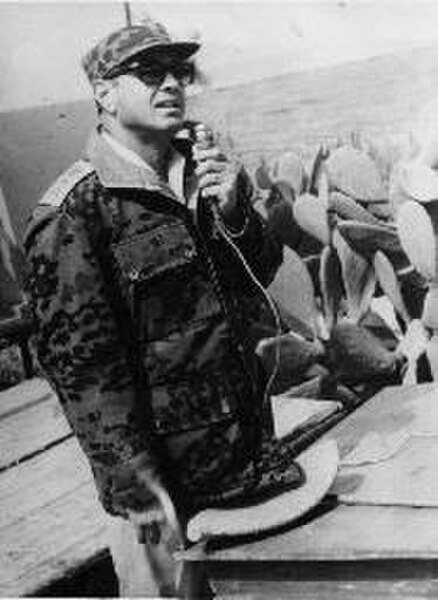Field Marshal Ahmad Ismail Ali was an Egyptian senior military officer who was Egypt's minister of war during the Yom Kippur War of 1973. He is best known for his planning of the attack across the Suez Canal, code-named Operation Badr.
Ahmad Ismail Ali
Lieutenant-General Shazly with Field Marshal Ahmed Ismail
Lieutenant-General Shazly with Field Marshal Ahmed Ismail and President Sadat, 1973
Ahmed Ismail Ali with President Anwar Sadat in the re-opening of Suez Canal, June 5, 1975
Operation Badr, also known as Plan Badr, was an Egyptian military offensive and operation across the Suez Canal that destroyed the Bar-Lev Line, a chain of Israeli fortifications along the frontline of the Israeli-occupied Sinai Peninsula, on 6 October 1973. It was launched in conjunction with a Syrian military offensive against the Israeli-occupied Golan Heights, triggering the Yom Kippur War. During the War of Attrition, which preceded Operation Badr, both Egypt and Syria had been seeking to recover the territories that Israel had captured from them during the 1967 Arab–Israeli War.
Egyptian military vehicles crossing the Suez Canal over one of the bridgeheads, 7 October 1973
Lt. Gen. Saad El Shazly was responsible for planning a crossing offensive
Egyptian soldiers on the east bank. Notice the carts. Pulled by two men, these transports greatly assisted in the movement of weapons and matériel on the east bank, while no vehicles had yet crossed.
Egyptian engineers employ water cannons to blast an opening in the massive Israeli sand wall.








